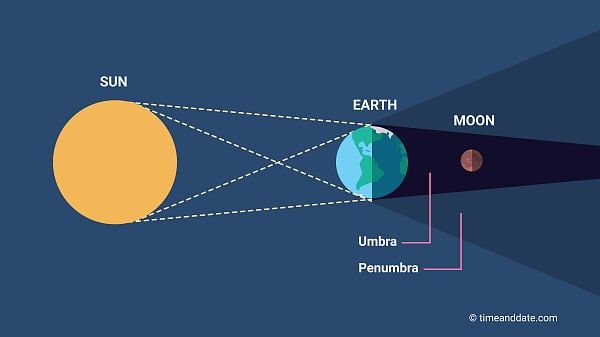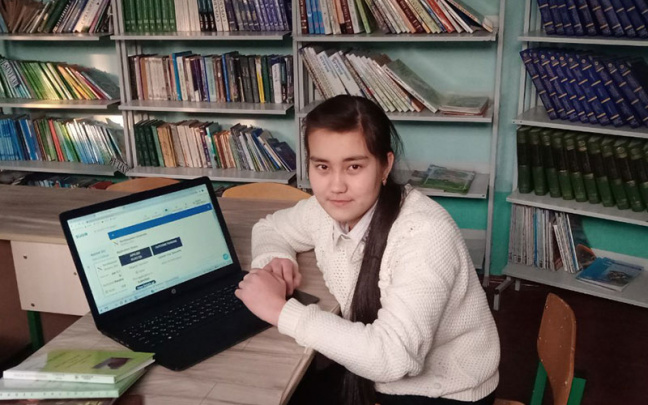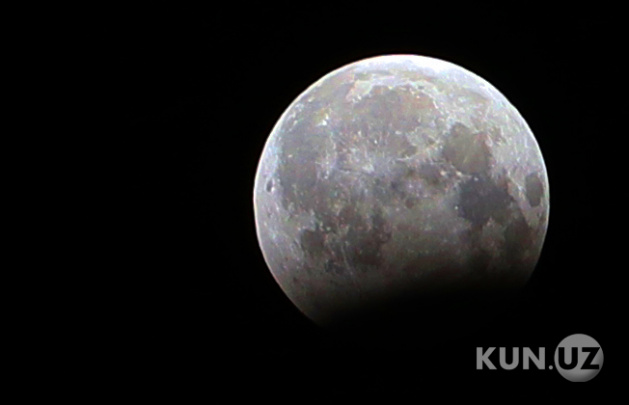Lunar eclipse to be observed in Uzbekistan on November 8
Today, the inhabitants of the Earth can observe the lunar eclipse. The total duration of this event is more than 4 hours, and during the full phase of the eclipse, the Moon falls completely in the Earth’s shadow.
On November 8, the inhabitants of the Earth can observe one of the most interesting astronomical phenomena – a total lunar eclipse. During this total phase of the eclipse, the Moon falls completely in the Earth’s shadow. The total duration of the lunar eclipse is more than 4 hours, and the total phase of the eclipse lasts 1 hour and 25 minutes. This lunar eclipse will be partially observed in Uzbekistan – on average, the eclipse can be observed for more than 1 hour.
The lunar eclipse begins before the moon rises, so the maximum phase of the eclipse is observed in all regions of Uzbekistan a few minutes after the moon rises above the horizon.
This astronomical phenomenon is fully observed in Siberia and the Far East, New Zealand, and the northwestern parts of North America. It can be partially observed in the regions of Central and Southeast Asia, Australia, and South American countries (Fig. 1).
The lunar eclipse will begin at 2:08 p.m. Tashkent time, and the total eclipse will begin at 3:16 p.m., reaching its maximum phase at 3:59 p.m. At 4:41 p.m., the total eclipse will end, but a partial eclipse will continue. The lunar eclipse will end at 5:49 p.m.

At 17:06 in Tashkent, the Moon will rise above the horizon, and at this time more than 60% of the Moon’s surface will be covered with the Earth’s shadow. At 17:09, the maximum phase of the partial lunar eclipse will be observed. 62% of the Moon’s surface will fall in the Earth’s shadow. At this time, the height of the Moon above the horizon makes an angle of about 1 degree. The total duration of the lunar eclipse in Tashkent is 43 minutes.

In the western regions of the Republic of Uzbekistan, namely the Republic of Karakalpakstan and the Khorezm region, a partial lunar eclipse will be observed in a very small phase. The population of Navoi, Bukhara, Samarkand, Karshi, Jizzakh and Termiz regions may witness a 25-35% cutoff. In the regions of Tashkent, Gulistan, Fergana, Namangan and Andijan, the eclipse phase is maximum from 50% to 78% (Table 2). A lunar eclipse begins before the Moon rises above the horizon. Therefore, in most regions of Uzbekistan, the maximum phase of the eclipse is observed a few minutes after the Moon rises above the horizon. Residents of Andijan region can witness the longest and largest phase of this eclipse. In Andijan, the maximum phase of the eclipse is 78%, and its duration is 54 minutes.
A brief overview of the total lunar eclipse
A total lunar eclipse is when the Sun-Earth-Moon line up and the Moon’s surface enters the Earth’s shadow. A total lunar eclipse lasts longer than a solar eclipse.

Here are some guidelines and recommendations:
A lunar eclipse can be observed with the naked eye. A lunar eclipse is safe to see with the naked eye. Observing a total lunar eclipse requires no special equipment.
Additional information:





